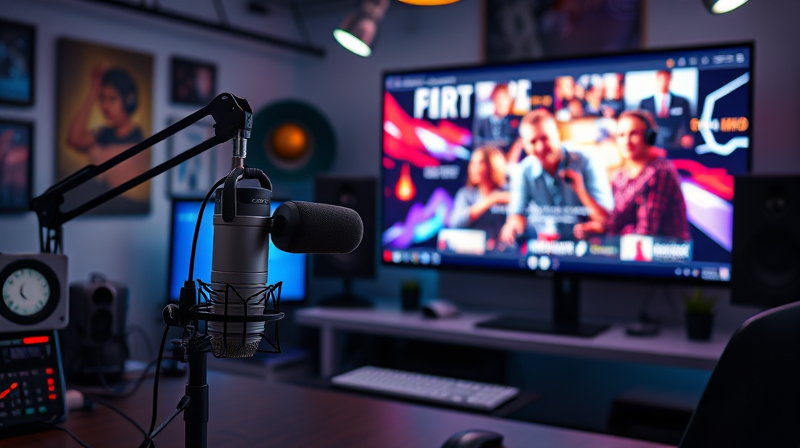In today’s fast-paced media environment, news consumers need to be vigilant about the information they are presented with. Detecting bias in news stories is no longer the domain of a few experts—it has become a skill essential for every reader, journalist, and educator. With advances in artificial intelligence and data-driven analysis, uncovering bias in media has never been quicker or clearer.
Media bias can subtly skew perceptions through a variety of techniques. From the topics chosen for coverage to the specific language used, news outlets can shape narratives in ways that may not be immediately obvious. Understanding and identifying these techniques is critical for anyone who wants to maintain an informed perspective in a complex media landscape.
Understanding the Multifaceted Nature of Bias
Bias in reporting is not simply about overt opinions—it is often embedded in the details. Traditional bias detection methods relied on expert analysis and manual review, a process that was not only time-consuming but also subject to its own biases. Fortunately, modern digital tools have made it possible to quickly analyze large volumes of media content.
Modern bias detection looks at several factors:
- Topic Selection: The choice of stories covered or omitted by news outlets can provide important clues. If certain topics are consistently ignored or given superficial treatment, there may be an underlying agenda.
- Tone and Language: The use of loaded language or emotionally charged terms can affect how a story is perceived. Comparing tone across different outlets helps highlight these subtle biases.
- Fact Selection and Omission: The inclusion of particular facts while omitting others can distort the overall narrative, leading to a skewed interpretation of events.
- Source Diversity: Relying on a limited range of sources can create an echo chamber, reinforcing a singular perspective rather than presenting balanced viewpoints.
Modern AI tools have the ability to quickly scan thousands of articles to reveal patterns in content coverage that might otherwise go unnoticed.
For instance, tools powered by large language models, such as GPT-4, and specialized platforms like BiasScanner are particularly well-suited for this task. They help track patterns of bias by highlighting discrepancies in tone, language, and fact inclusion across multiple news outlets.
Practical Techniques for Bias Detection
There are several quick techniques anyone can use to detect bias in news stories. By learning and applying these methods, readers can ensure that they get a balanced view of current events.
Analyze Topic Selection. One of the primary indications of bias is how stories are chosen and prioritized. Automated tools are now adept at analyzing which topics receive extensive coverage and which are bypassed. If a news outlet consistently sidesteps certain issues, it raises the possibility of a systematic bias that would otherwise go unnoticed.
Examine Tone and Language. Often, bias is embedded in the tone and choice of words used in an article. AI models assess these aspects by comparing how different outlets frame similar events. When one outlet uses more sensational language while another opts for a neutral tone, it can signal a partisan lean. This kind of sentiment analysis is especially useful for scrutinizing how media frames political or controversial topics.
Check Fact Selection and Source Diversity. Another key method involves critically assessing the list of facts presented in a story alongside the diversity of its sources. Articles that rely heavily on a narrow band of voices are likely to provide a less comprehensive view of the issue at hand. Detecting a lack of source variety can be an important clue that bias is at work.
These techniques work best when automated analysis is paired with a careful, manual review of content. While AI can highlight trends and flag potentially biased articles, human judgment is still needed to interpret these findings in context.
Compare Multiple Outlets. One of the simplest ways to spot biases is to cross-reference stories across several reputable sources. When discrepancies in reporting or headline framing become apparent, they often point to bias. This method, combined with automated detection, can offer a more objective assessment of the narrative being presented.
By integrating both automated tools and personal scrutiny, news consumers can become more critically aware and less susceptible to biased reporting, ultimately developing a more rounded understanding of complex issues.
With a blend of innovative AI technologies and timeless investigative techniques, anyone can quickly and effectively detect bias. This ability not only enhances personal media literacy but also contributes to a broader cultural push towards transparency and integrity in journalism.
Given the rapid pace of modern news, adopting these quick and clear techniques is essential. By identifying bias early, readers can take proactive steps to seek out balanced information, ensuring they remain well-informed citizens. Every individual, whether a journalist or an ordinary reader, holds the power to demand a higher standard of media accuracy.
Embracing these strategies means recognizing that the fight against bias is an ongoing journey. Over time, with commitment and the right tools, it is entirely possible to navigate the complex world of news media more effectively and confidently. The collaboration between AI and human insight will continue to drive improvements in detecting and understanding media bias, making accurate, balanced reporting more accessible than ever before.
This evolving landscape calls for active participation and continuous learning. As we all work together to enhance media literacy, the goal remains clear: balanced, transparent, and accountable journalism that empowers all of us to make better-informed decisions about the world around us.







